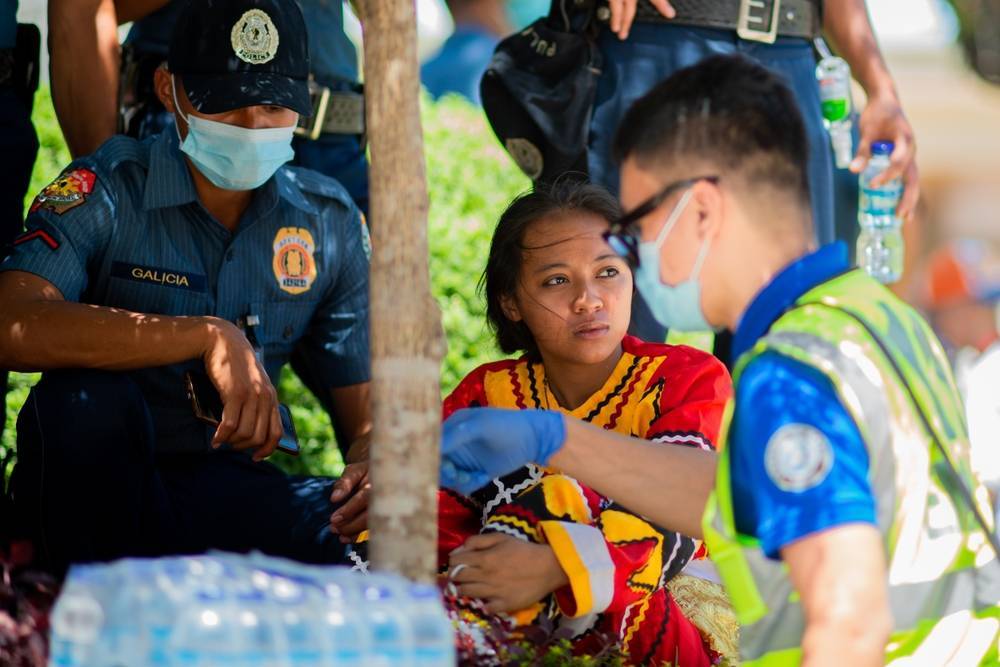As the warm and dry season arrives in the Philippines, the country is already experiencing extreme heat and its impact on the economy and the people’s health.
The Philippine Atmospheric, Geophysical and Astronomical Services Administration (Pagasa) has warned that there is a high likelihood that the El Niño phenomenon, characterized by extreme heat and prolonged dry spells, will develop in the next six months.
Temperatures have already reached as high as 47 degrees in certain regions. However, experts still expect it to increase in the coming months. According to the national classification, a temperature of 42°C to 51°C is considered dangerous, while a temperature equal to or higher than 52°C is already extremely dangerous.
Health Risks
The increasing heat poses health risks such as heat-related illnesses like heat cramps, heat exhaustion, sunburn, rash, and potentially fatal heatstroke. Children, the elderly, and people with chronic conditions are more susceptible to heat-related illnesses. According to Dr Eduardo Janairo of the Department of Health (DOH), heatstroke is the most severe form of heat-related illness that could be a medical emergency.
When the body loses control and overheats due to prolonged exposure to high temperatures or physical exertion, the Mayo Clinic and Centers for Disease Control and Prevention (CDC) define heat stroke. If left untreated, it can cause damage to the brain, muscles, heart, and kidneys. More importantly, further delayed treatment increases the risk of death. Prolonged exposure to high temperatures amplifies the basic causes of heat stroke. These include dehydration, drinking alcohol, and wearing too much clothing that prevents sweat from evaporating. Factors that increase the risks of heat stroke include age, sudden exposure to hot weather and lack of air conditioning. Other risk factors include certain medications and stimulants, and certain health conditions.
Incidences of heatstroke have been on the rise.
Symptoms of Heatstroke
The symptoms of heatstroke include a high body temperature and hot or dry red skin, an altered state or behaviour, seizures, delirium, dropping into a coma, nausea & headache. Equally important symptoms include rapid and shallow breathing, faster heart rate, muscle cramps, and becoming very thirsty. Advisors recommend calling for emergency services immediately and keeping the affected person indoors or in a shaded area, removing excess clothing, and cooling them down using cold water for consumption or dousing, ice packs, or wet towels on the head, neck, armpits, and groin area if someone experiences heat stroke.
Preventive measures
Preventive measures include applying sunscreen with a SPF of at least 15 every two hours and drinking plenty of fluids. Also, people should also wear loose or lightweight clothing, avoid staying in a parked car when the temperatures are warm, limit time doing activities until one is conditioned to a hotter environment. Furthermore, they should avoid strenuous activity in such temperatures or simply do activities during cooler parts of the day. In adddition, they should close curtains and windows and turn off electrical equipment and lights that could make the room hotter.
Impact on Children
In 2020, high heat frequency (4.5 or more heatwaves per year) affected an estimated 1.1 million children in the Philippines. Meanwhile, at least 1.9 million children were impacted by prolonged heatwaves lasting 4.7 days or more. Additionally, these numbers are expected to increase in 2050. It is expected 33.5 million Filipino children (99% of all children in the country) will experience five or more heatwaves. Additioanlly, 26.3 million (77% of the estimated total children) will experience a long heatwave duration.
According to Unicef, these impacts on health, safety, nutrition, education, access to water, and future livelihoods will be severe. Climate activist and Unicef Goodwill Ambassador Vanessa Nakate stresses the urgent need to address this issue. Undeniably, as the effects of the climate crisis on children are devastating.

